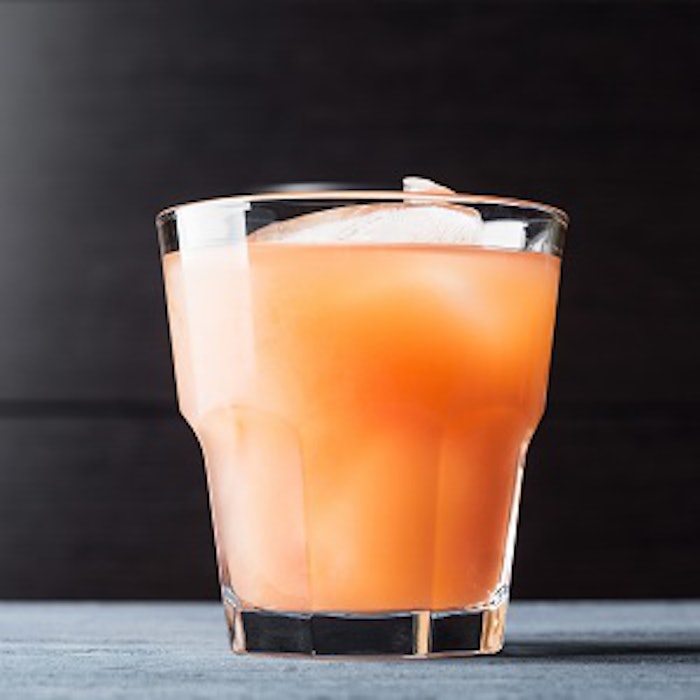
Beverage emulsions are O/W emulsions comprised of two categories: flavor emulsions and cloud emulsions. The former provides the beverage with flavor and cloudiness in certain formulae, whereas the latter provide only cloudiness with minimal or no flavor. A typical composition includes flavor oils (often essential oils) and weighing agents in the oil phase, and water, hydrocolloid, citric acid, preservatives, colorings and sweetener in the water phase. In a cloud emulsion, the flavorless oil can be orange terpenes or vegetable oils. Hydrocolloids, traditionally gum arabic (gum acacia) and more recently modified starches, serve as emulsifier and stabilizer. Citric acid is used for pH control, bringing the pH below 4.5, and benzoate as preservative. Both are for the purpose of preventing microbial spoilage, the reason being that most bacteria grow best at pH ranges 6.0 to 8.5, and pathogens do not grow below pH 4.5. Also, pH lowering is essential to activate the preservative since it is the undissociated form of benzoic acid that exhibits antimicrobial action. Colorings are for aesthetic purposes (e.g., FDC colors, marigold extract and b-carotenes for either yellow or orange shades). When the emulsion is just a cloudifier, no colors are added; the natural color of cloudifiers is milky white. Weighing agents can also be called density adjusting agents, that is, oil-soluble materials with no flavor of their own and density higher than the flavor oil. As the name implies, they are added to the flavor oil to increase the oil phase density. The importance of good quality water in the emulsion is no less than that in soft drinks and similar standard treatments should be applied. Treatment should remove colloidal and suspended matter, undesirable taste, odor and microorganisms. The carbonated water hardness or alkalinity should be reduced since it neutralizes the acid and causes the beverage to “go flat” and taste insipid. In addition, it can affect the stability of the emulsion due to neutralization of electrostatic charges. That is why water hardness level recommended for beverage emulsions is ≤ 50 mg of CaCO3 per liter.
Beverage emulsions are a unique class of emulsions, different from other food emulsions in that they are to be consumed in a highly diluted form rather than in their original concentrated form. They are first prepared as an emulsion concentrate which is later diluted in sugar solution in order to produce the finished beverage, either carbonated or non-carbonated. The emulsion must have a significant degree of stability in both the concentrated and diluted forms; typically, at least six months are required by the beverage industry.










